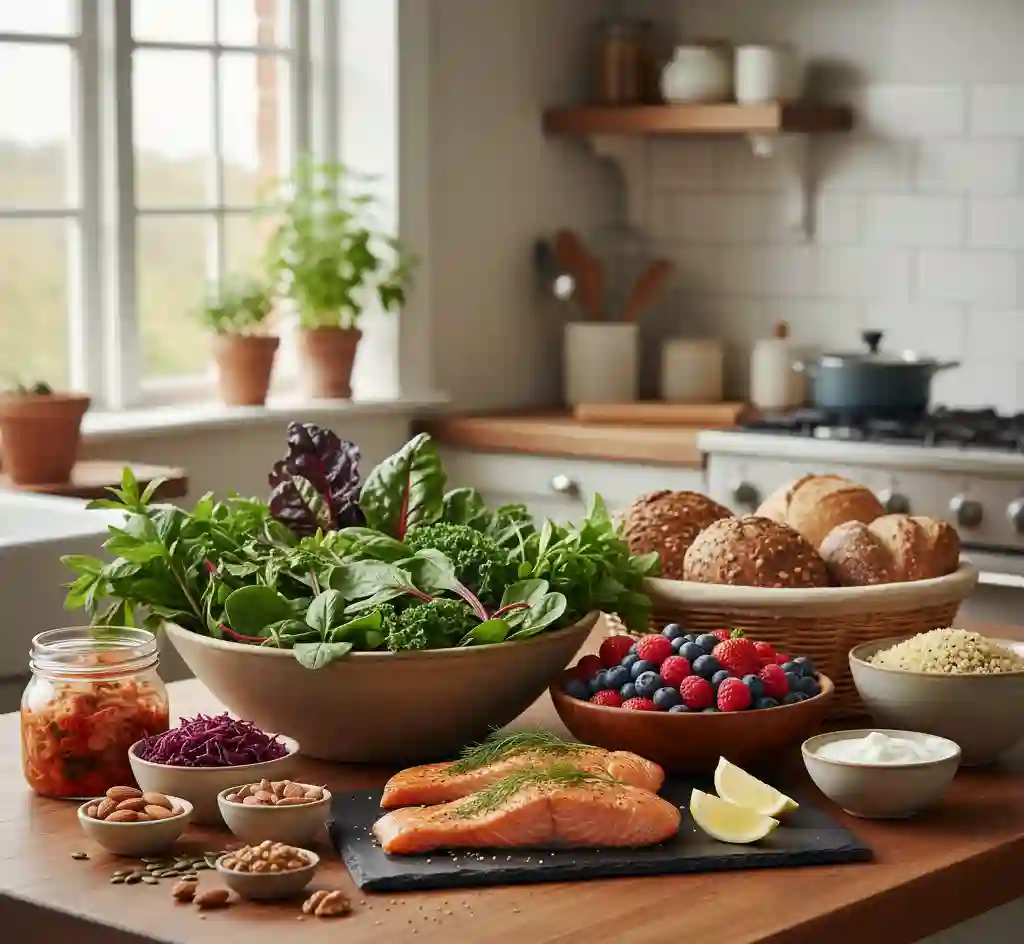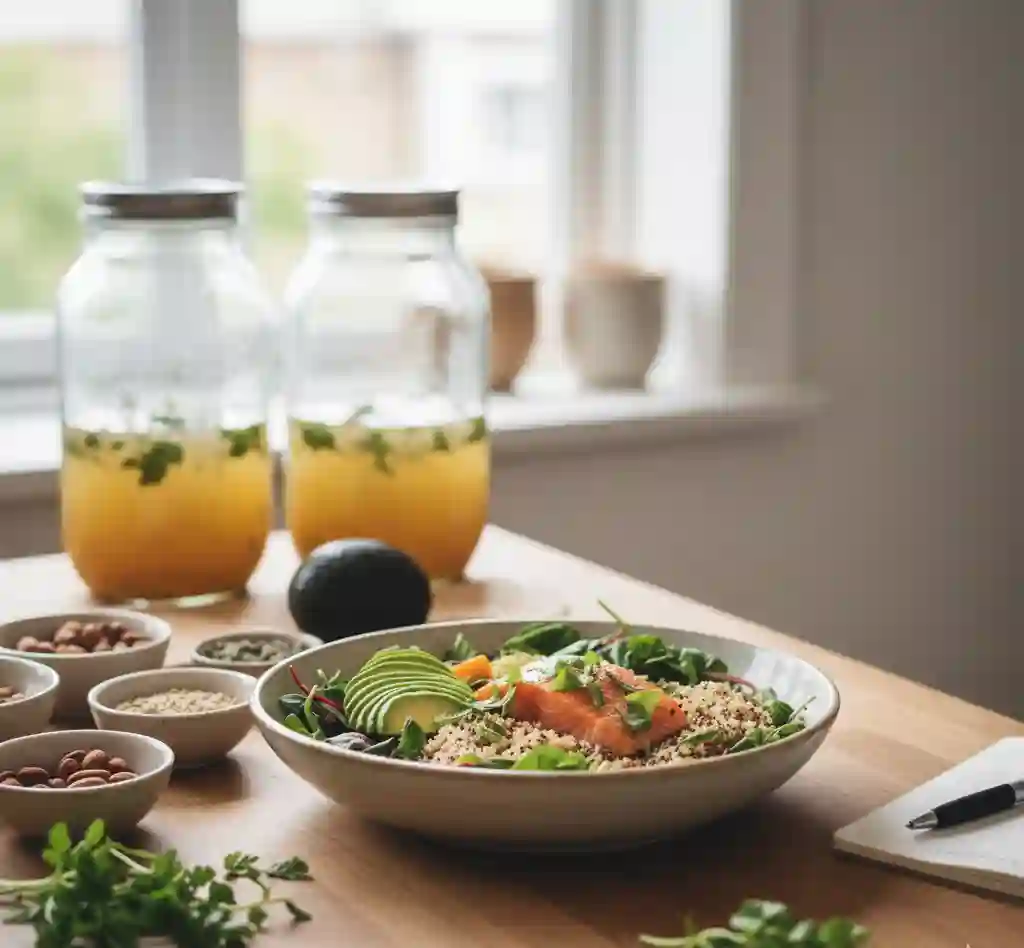The Science Behind Food and Mood
When Sarah, a 32-year-old teacher, started experiencing persistent anxiety, she never imagined the solution might be in her kitchen. After three months of incorporating specific nutrient-dense foods into her diet, she reported a 60% reduction in her anxiety symptoms. Her story isn’t unique—nutritional psychiatry research continues to reveal powerful connections between what we eat and how we feel.
The gut-brain axis represents one of the most exciting discoveries in modern neuroscience. Your digestive system and brain communicate constantly through neural pathways, hormones, and immune system messengers. When you eat foods rich in specific nutrients, you’re essentially sending direct messages to your brain that can either promote calmness and clarity or contribute to inflammation and mood disturbances.
Q: How quickly can food changes impact mood?
A: Research shows certain dietary changes can begin affecting brain chemistry within hours, though most people notice significant mood improvements within 2-4 weeks of consistent nutritional changes.
Essential Nutrients for Emotional Balance
Certain nutrients play particularly important roles in mental wellness. Magnesium, often called nature’s tranquilizer, helps regulate the nervous system and promotes relaxation. Omega-3 fatty acids support brain cell membrane fluidity, enhancing communication between neurons. B vitamins act as cofactors in the production of neurotransmitters like serotonin and dopamine.
Antioxidants from colorful fruits and vegetables protect the brain from oxidative stress, while amino acids from protein sources provide the building blocks for mood-regulating neurotransmitters. Fermented foods introduce beneficial bacteria that support the gut-brain connection, and complex carbohydrates help regulate blood sugar levels that can influence emotional stability.
Q: Can food really be as effective as medication for mood support?
A: While nutritional approaches shouldn’t replace necessary medical treatments, multiple studies demonstrate that specific dietary patterns can significantly complement conventional approaches to mental wellness.
Evidence-Based Anxiety Relief Recipes
Calming Magnesium-Rich Spinach and Almond Bowl
This recipe combines three potent anxiety-reducing ingredients: spinach rich in magnesium, almonds containing both magnesium and healthy fats, and avocado providing potassium and monounsaturated fats. Clinical studies have shown that adequate magnesium intake correlates with reduced anxiety symptoms, likely due to its role in regulating the hypothalamic-pituitary-adrenal axis.
Combine fresh spinach, sliced almonds, diced avocado, chickpeas, and a lemon-tahini dressing. The combination provides magnesium, healthy fats, fiber, and plant-based protein. Many individuals report feeling noticeably calmer within an hour of consuming this meal, particularly during stressful periods.
Gut-Brain Harmony Fermented Vegetables
Fermented foods like kimchi and sauerkraut contain probiotics that support the gut-brain axis. Research in the Journal of Psychiatric Research found that regular consumption of fermented foods correlates with reduced social anxiety symptoms. The beneficial bacteria in these foods produce neurotransmitters and anti-inflammatory compounds that directly influence brain function.
Q: What makes these recipes more effective than general healthy eating?
A: These recipes are specifically designed with nutrient combinations that research has shown to target multiple pathways involved in stress response and mood regulation simultaneously.

Practical Implementation for Busy Lives
Transitioning to a mood-supportive diet doesn’t require complete overhaul overnight. Start by incorporating one mood-supportive meal daily, gradually building to a predominantly whole-foods diet. Preparation is key—washing and chopping vegetables in advance, batch-cooking grains and proteins, and having healthy snacks readily available prevents stress-induced poor food choices.
Many people find keeping a “mood-food journal” helpful for identifying personal triggers and beneficial foods. Tracking what you eat alongside energy levels, mood states, and stress responses can reveal powerful individual patterns that inform your personalized nutrition approach.
The most successful approach involves viewing food not as medication but as foundational support—creating a nutritional environment where your nervous system can thrive regardless of life’s inevitable stresses.
Q: How can someone with limited cooking skills start incorporating these foods?
A: Begin with simple assembly meals like yogurt parfaits with berries and nuts, or rice bowls with canned beans, frozen vegetables, and avocado. Even minimal preparation of whole foods provides significant benefits.
Sustainable Eating for Long-Term Mental Wellness
The greatest mood benefits come from consistent, long-term dietary patterns rather than occasional “perfect” eating. Focus on progress, not perfection—aiming to include mood-supportive foods regularly while allowing flexibility for social occasions and personal preferences.
Seasonal eating not only provides variety but ensures you’re consuming produce at its nutritional peak. In spring, focus on leafy greens; summer brings antioxidant-rich berries; autumn offers squash and root vegetables; winter provides citrus fruits packed with vitamin C.
Remember that the relationship between food and mood extends beyond nutrients. The acts of cooking, sharing meals with loved ones, and mindful eating practices all contribute to emotional wellness in ways that complement the biochemical benefits of the foods themselves.
Q: What’s the most common mistake people make when using food to support mood?
A: Focusing exclusively on adding “good” foods while maintaining high intake of processed foods, sugar, and inflammatory oils. Reducing inflammatory foods is equally important as adding beneficial ones.
Creating Your Personal Mood-Supportive Kitchen
Transforming your kitchen into a space that supports mental wellness begins with strategic stocking. Keep mood-supportive staples like oats, canned beans, frozen berries, nuts, seeds, and whole grains readily available. Organize your refrigerator to make healthy choices the easiest choices—place washed and chopped vegetables at eye level, keep fruits visible in bowls rather than hidden in drawers.
Many people find that simply having the right ingredients on hand makes mood-supportive eating naturally occur. When your kitchen contains primarily whole foods and minimal processed items, every spontaneous meal decision automatically supports your emotional wellness goals.
Your kitchen can become your most accessible mental health resource—a place where simple, intentional food choices provide daily support for your emotional resilience and overall wellbeing.
Q: How can I maintain this approach when eating in restaurants or traveling?
A: Look for menu items featuring vegetables, lean proteins, and whole grains. Request dressings and sauces on the side, choose steamed or grilled options over fried, and focus on including at least two vegetable components in each meal.
Academic Reference:
Jacka, F. N., O’Neil, A., Opie, R., Itsiopoulos, C., Cotton, S., Mohebbi, M., Castle, D., Dash, S., Mihalopoulos, C., Chatterton, M. L., Brazionis, L., Dean, O. M., Hodge, A. M., & Berk, M. (2017). A randomised controlled trial of dietary improvement for adults with major depression (the ‘SMILES’ trial). BMC Medicine, 15, 23. https://doi.org/10.1186/s12916-017-0791-y


